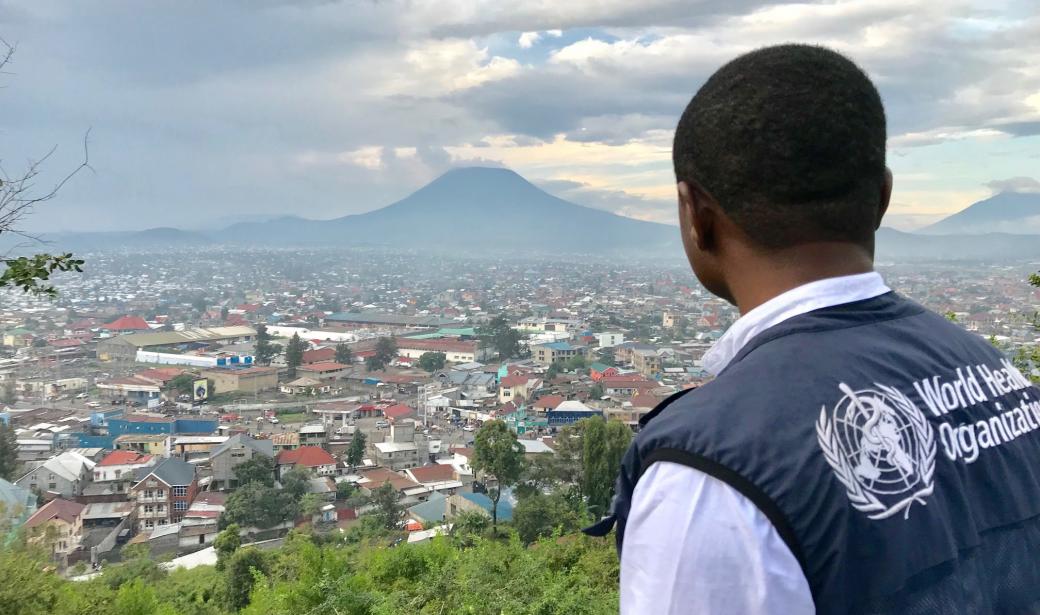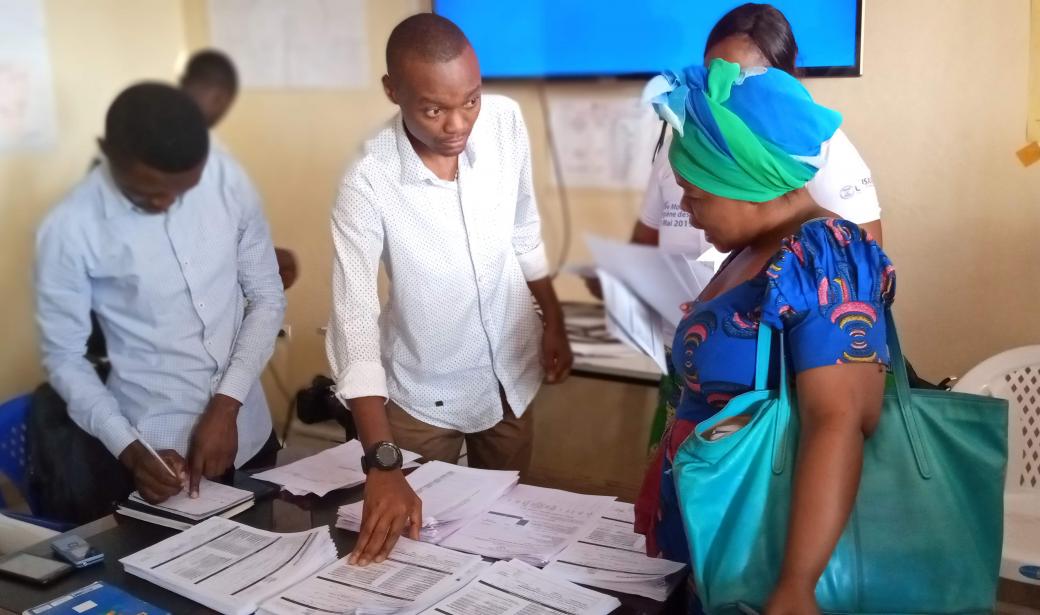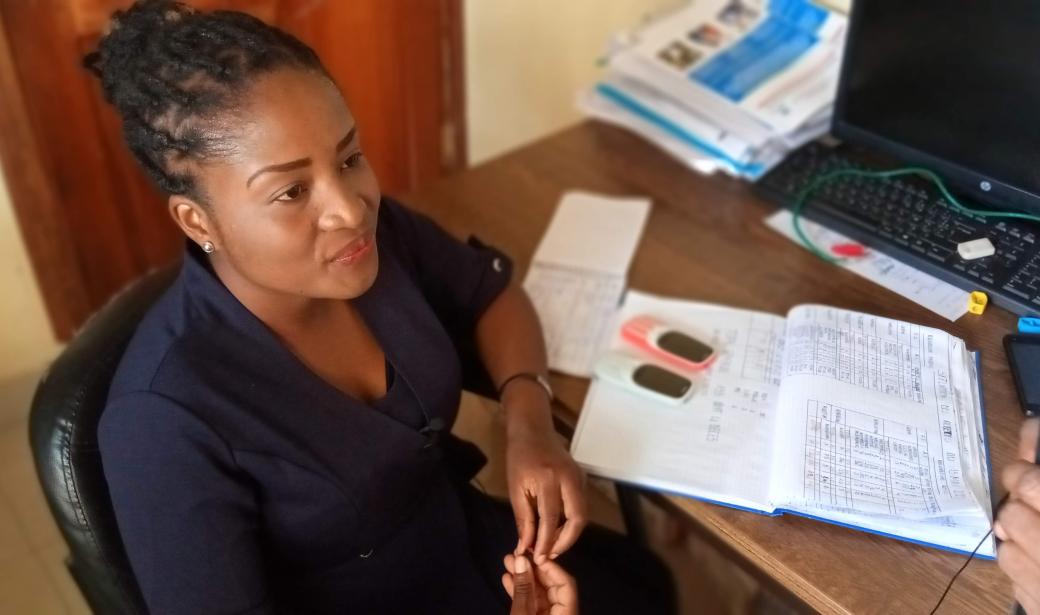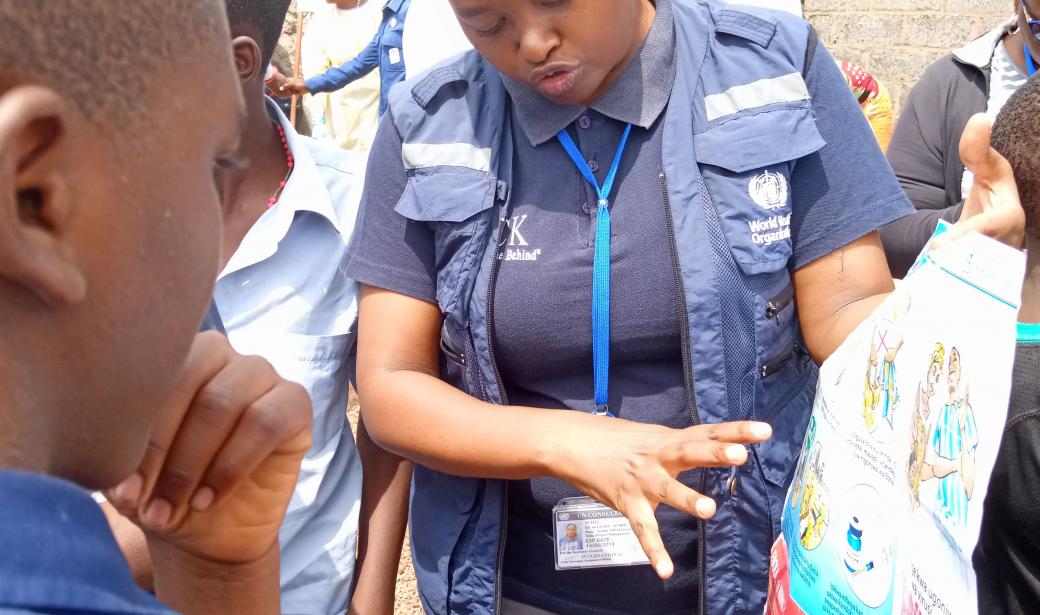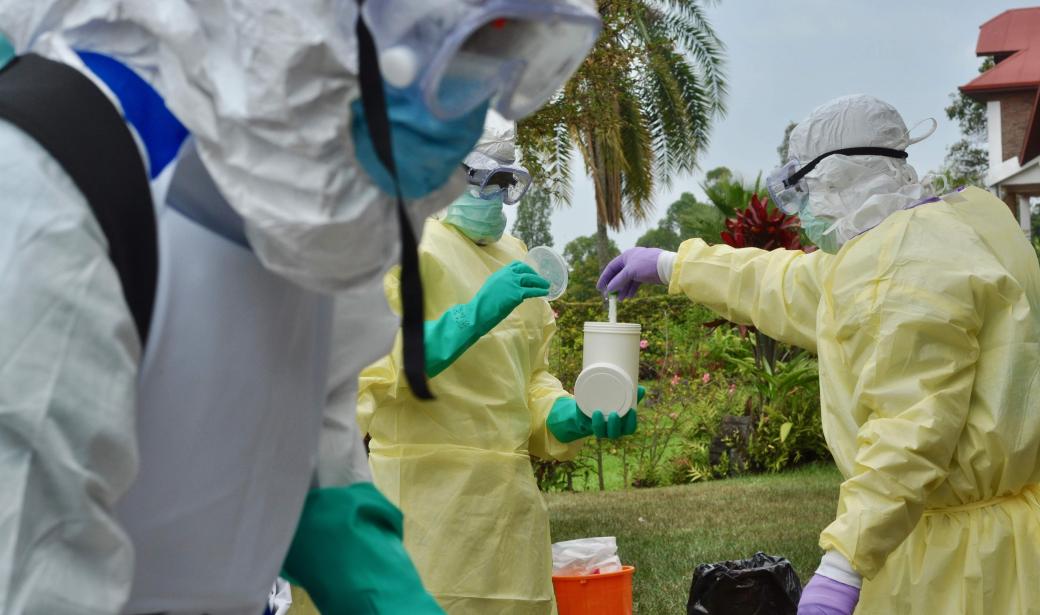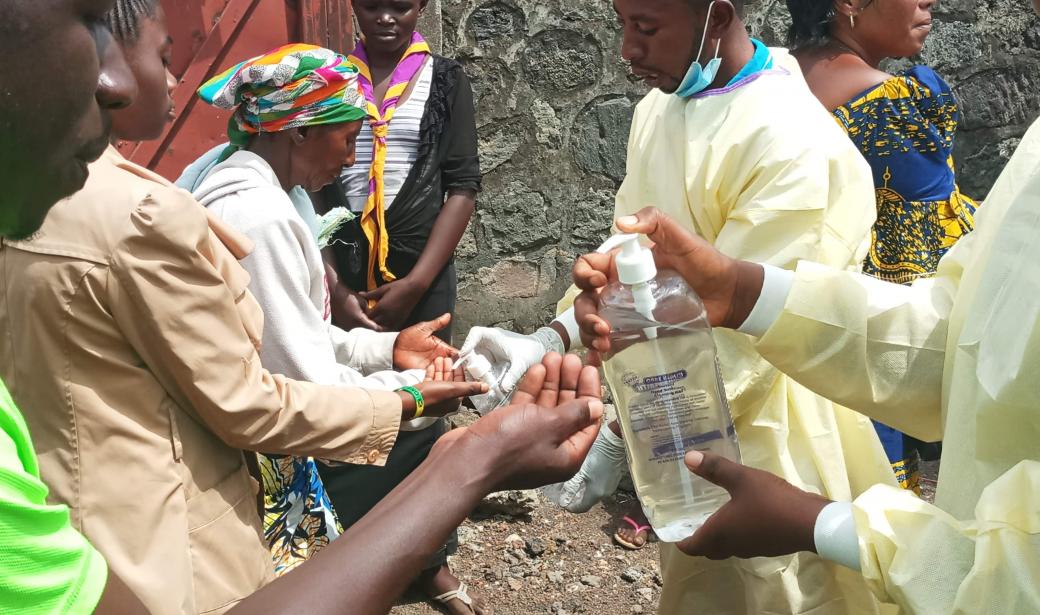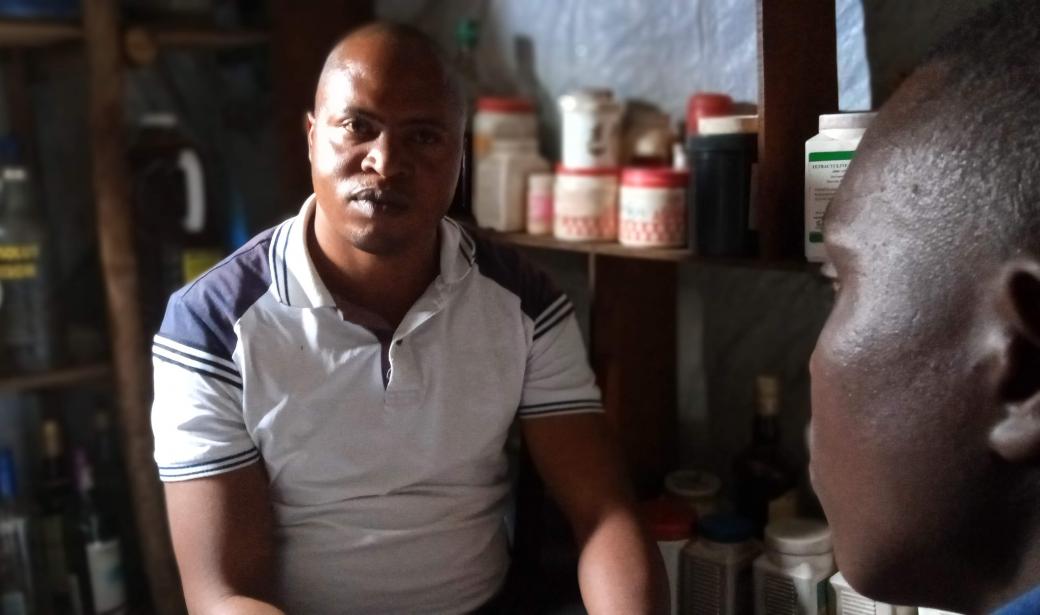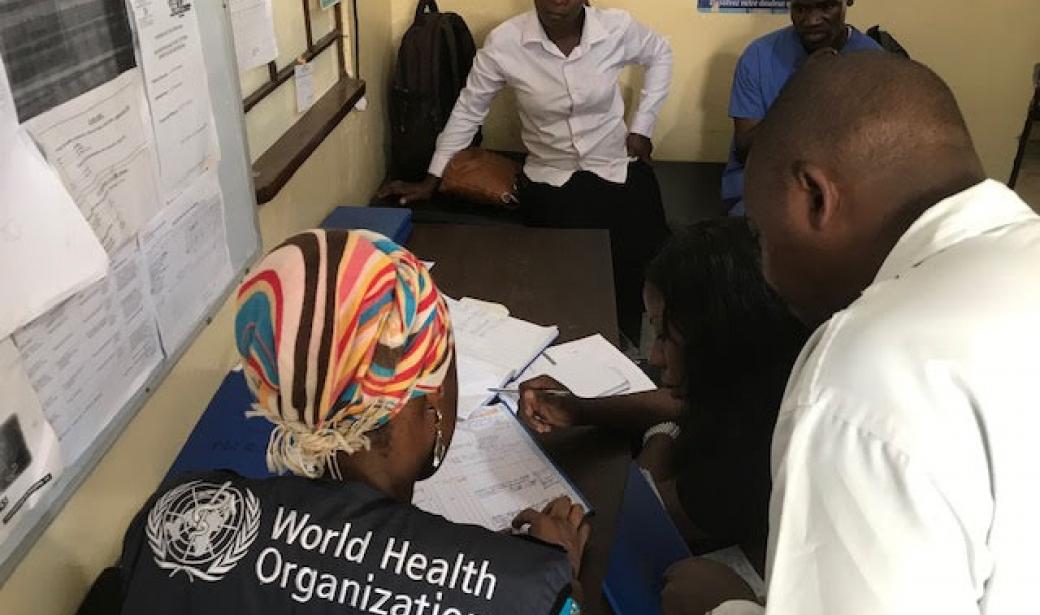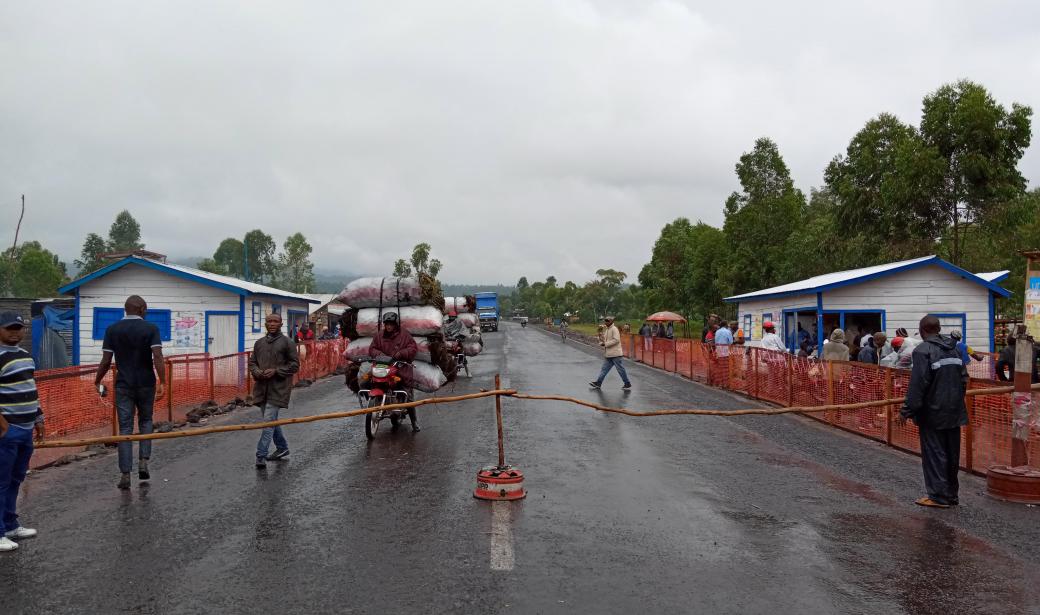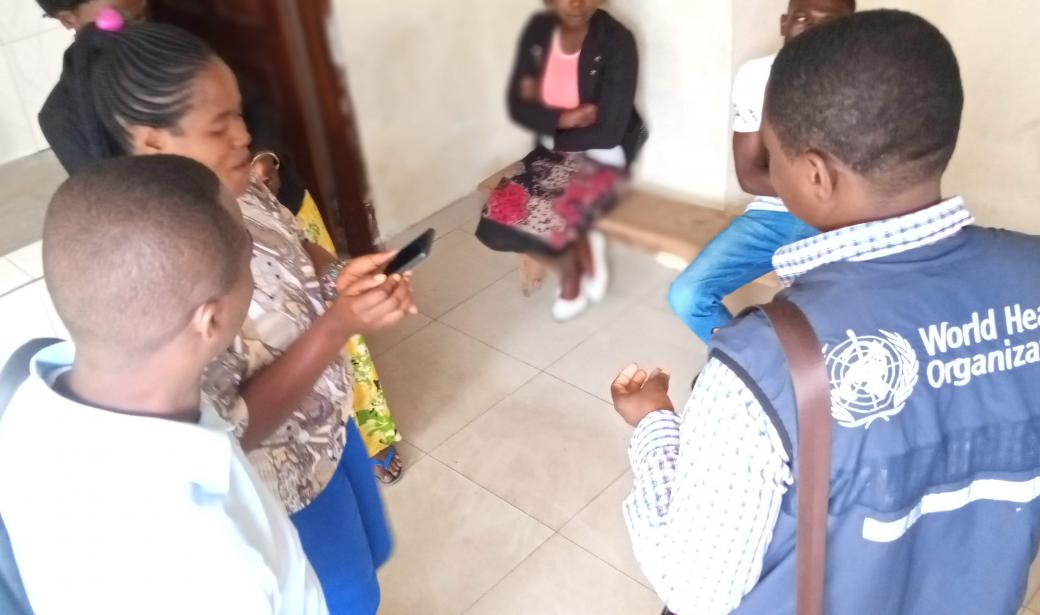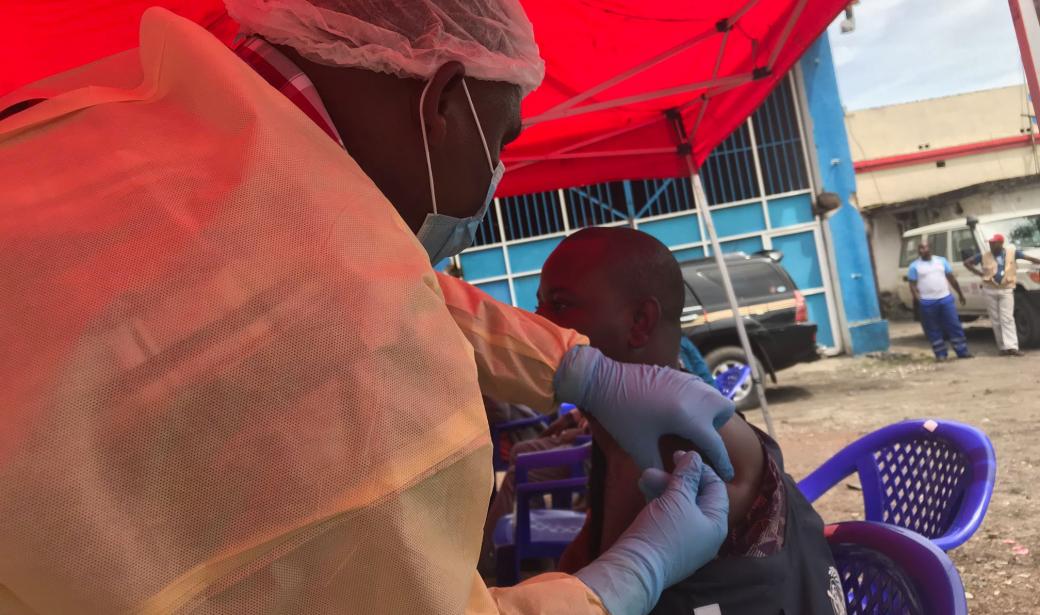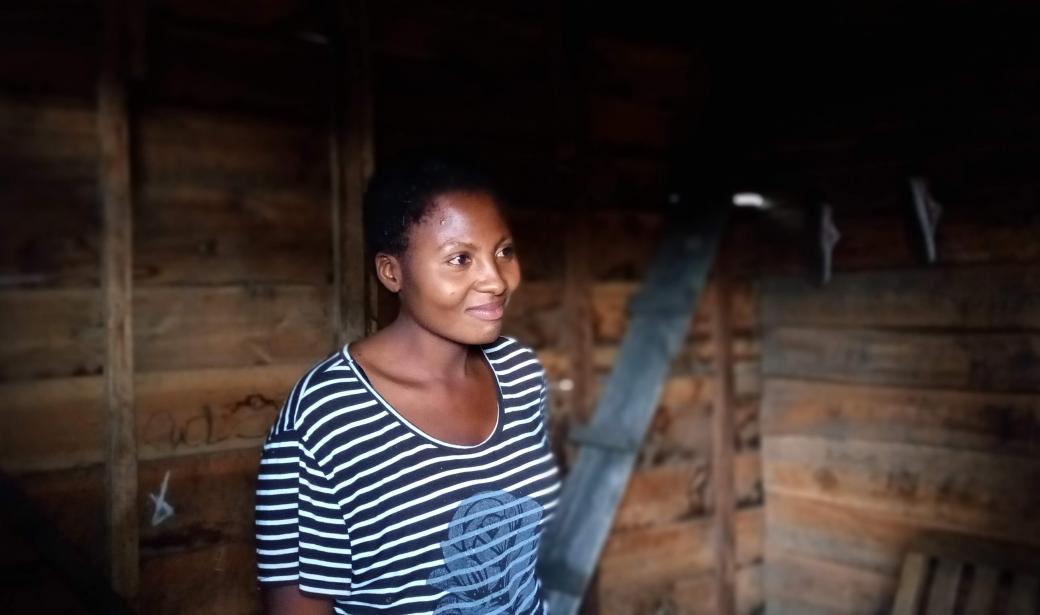John Kisimir
As the third largest city of the Democratic Republic of the Congo, Goma has more than 1 million people. It’s located on the shores of Lake Kivu in the Eastern part of the DRC, where Ebola has affected communities in North Kivu province (Butembo, Beni and Katwa). Alongside the Government, WHO and partners are jointly preparing Goma for any possible Ebola outbreak. They aim to protect Goma by stopping any spread of the virus.
Tania Seburyamo
Every morning, a team of medics check on a number of health centres and communities in Goma in search of possible Ebola cases. In case of an alert when suspected cases are reported by health facilities, community leaders or families are referred to specialized testing facilities in Goma.
Tania Seburyamo
Engaging and empathizing with families that have to go through the process of being screened and tested is a critical part of Dr Kalumbi’s day-to-day work.
Here, Dr Kalumbi persuades a family in Goma to allow one of their relatives to be taken into an Emergency Treatment Centre (ETC) to be screened and tested. These negotiations can be difficult and emotional, and tact and patience is needed. In this case, the tests on the patient were negative and he was returned to his family.
Here, Dr Kalumbi persuades a family in Goma to allow one of their relatives to be taken into an Emergency Treatment Centre (ETC) to be screened and tested. These negotiations can be difficult and emotional, and tact and patience is needed. In this case, the tests on the patient were negative and he was returned to his family.
Tania Seburyamo
Rachel has just heard that she is not carrying the Ebola virus. She was under surveillance at her home in Goma for 21 days after she and her four children visited a friend in Beni who contracted the virus.
The surveillance team vaccinated the family but had been concerned that her contact with her friend put her at risk of becoming infected herself, and potentially further infecting others in her family.
The surveillance team vaccinated the family but had been concerned that her contact with her friend put her at risk of becoming infected herself, and potentially further infecting others in her family.



